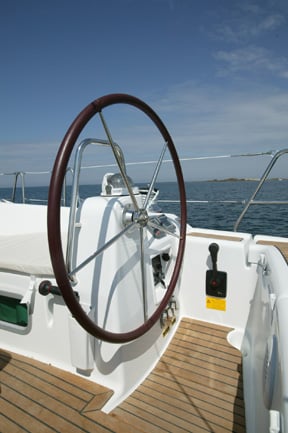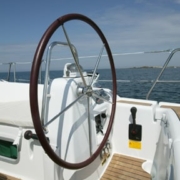Operating the Engine – Getting Familiar with a Charter Boat

Catamarans have two throttles, one for each engine. The NauticEd Catamaran conversion clinic will cover extensively how to maneuver a catamaran using engines. However, these throttle levers also have a pull out button on them to disengage the gearbox.
The transmission must be in neutral before starting the engine, so get in the habit of using the same starting routine every time. When approaching a dock, and with the engine running I always shift the transmission into reverse before making a final approach. This assures that the cables engage in reverse gear before being committed to the docking maneuver. Crunching the dock when returning back to base is a relatively bad idea. Here is a shameless plug for you to take the NauticEd Maneuvering under power clinic. You’ll learn how to maneuver the boat like an expert. Especially in chartering situations – a lot of times you’re expected to back the boat down between a series of slips and right turn backward into a slip. Or how about doing a Mediterranean mooring with a 30-mile-an-hour side breeze?






